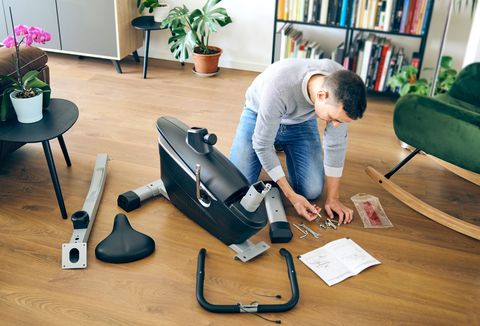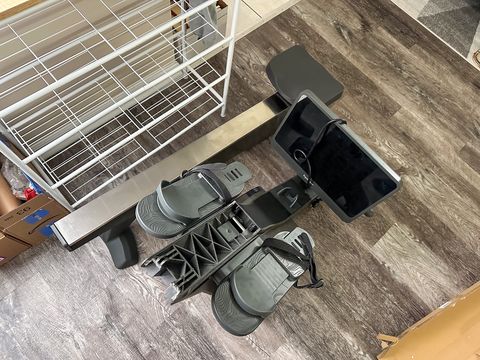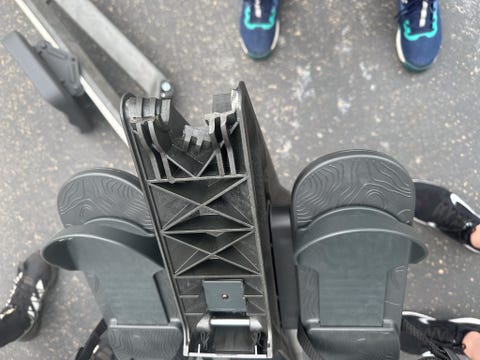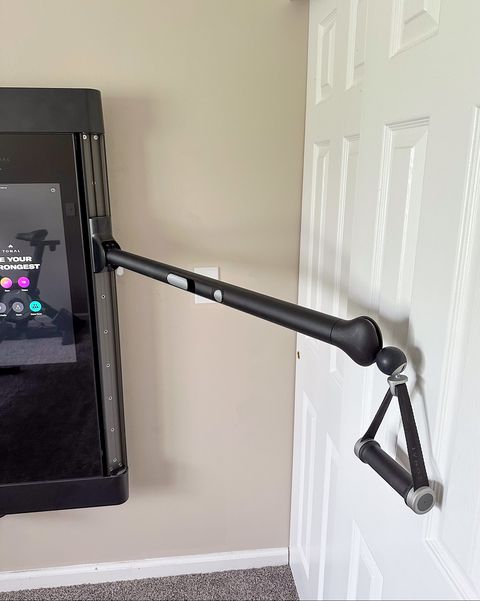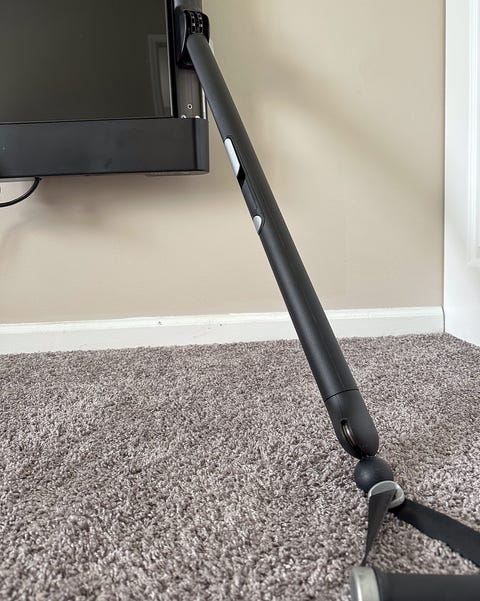When the COVID shutdowns first occurred back in March 2020, I, like many people, found myself trying to recreate some semblance of normalcy. That meant (at least in part) re-establishing some good habits, especially those related to fitness. It was about more than simply seeking a means to maintain bodily health; I wanted to sustain my mental health, too.
I tried walking, hiking and even running more regularly but soon found that everyone else seemed to have the same idea. That meant the roads and trails were pretty crowded and, at the time, felt risky. I also tried doing calisthenics, aerobics and other bodyweight workouts but wasn't really enjoying them. So, I turned down another path: buying home fitness equipment. I purchased a weightlifting machine, a stationary bike and a rowing machine and set them up in my home. For the first time since the shutdowns started, I felt like I was finally back on track.
I continued to use those machines even when gyms started to reopen. I loved them. They afforded me the freedom to exercise when I wanted and how I wanted, and they even pushed me to try things I might not have otherwise in a public setting (like the dreaded Bulgarian split squat). I started working out more often and enjoyed all the benefits therein. For a time, things were really great. Then I decided to move across the country — literally, from California to New York — and my love for my home fitness machines began to crumble.
For the record, this article is not a critique of home gym equipment itself. I just want to share the real-world experience I had moving that equipment across the country and into my new home — and the logistical pitfalls/lessons learned so that you do not suffer the same fate I did.
1. How You Move Your Equipment Depends on the Machine
Freestanding machines — like exercise bikes, rowers and some weight machines — usually require that you move them yourself. However, some companies — especially those that make wall-mounted workout machines or set-ups with complex constructions — may require users to contact them to un-mount and disassemble certain machines. There may be an option to do it yourself, but that may also void the warranty. So, before you move, find out the conditions of moving your machines.
2. Doing It Yourself Has Its Own Problems
Home fitness machines can be very large and very heavy. That's just the nature of how they are built and used. This means they take up a lot of space in your home and, similarly, in a moving truck or pod. They can also create a lot of unusable space, which is a problem when you're paying by the square foot for your move, as you would with a truck or pod.
For example, my exercise bike took up about a four-square-foot spot in my moving pod. And it didn't just affect horizontal space. Because of its awkward shape, the seat and screen, et cetera, I couldn't really stack anything on top of it for fear of damaging the bike and harming anything that might shift around and fall during the move. In a moving pod that was only about 6 x 7 x 8 feet, that really limited what else I could pack.
3. The Risk of Damaging Your Expensive Equipment Is Very Real
Moving can be somewhat violent, no matter how well you pack. Trucks are subject to the forces of gravity on the road and, unless you're some kind of airtight Tetris champion, stuff tends to shift around. While I didn't have anything catastrophically damaged, all of my fitness machines came out of the moving pods with scuffs and scrapes they didn't have when I put them in there — and I packed them very carefully, wrapped delicate parts in bubble wrap and was cautious about what I packed alongside them.
4. You Can't Always Depend on "Professionals" to Help
During my move, there was one major casualty: my beloved rower. When I first received it, a logistics company (not the rower brand) delivered and assembled the machine. What I did not know at the time was that they neglected to install a vital pin into the device. So, when it came time to move, the rower actually snapped in half — yes, it broke into two pieces — before I even got it into the moving pod.
Thankfully, the brand very graciously offered to send a replacement. They informed me that my new device would be dropped off, the logistics employees would assemble it, and they would retrieve my broken one. On the scheduled day, the logistics company showed up and dropped off a box, still on a wooden pallet, at my front door. They did not assemble it, nor did they pick up the broken one. I had to re-contact the rower brand, and thankfully, they sent out another team to pick up the broken unit about a week later.
I ended up assembling the rower myself before the pickup team showed up, which is how I discovered that the previous team had not assembled my original unit correctly. I even compared them side-by-side to see what had gone wrong. I was thankful I got a chance to put it together myself rather than risk them doing it incorrectly a second time. I would actually recommend anyone buying home fitness equipment assemble it themselves (or recruit a handy relative or friend) because my experience with third-party logistics companies has been almost entirely negative.
5. The Squeaky Wheel (Eventually) Gets the Grease
As bad as the rowing machine snafu was, the worst experience of my entire move involved my weightlifting machine. A condition of the warranty is that I had to pay roughly $550 for a third-party logistics company to uninstall it, move the machine myself, and then have it reinstalled by that same third-party logistics company at my new location.
I scheduled the uninstallation for a week before my cross-country move. The day before the uninstall, the logistics company called to cancel my appointment. They offered another date, which was after my move date. After some back-and-forth, they agreed to come and uninstall it the day before my move — not ideal, but I grudgingly accepted.
That day came and, again, the third-party logistics company called and canceled. I contacted the company that made the machine and was informed that, due to my special circumstances, I could do the uninstall myself without voiding the warranty. As the wall-mounted device weighs about 250 pounds, it was inconvenient, time-consuming and difficult, but I got it done.
After I arrived at my new home, the third-party logistics company canceled another two times before finally showing up to reinstall the device. Not knowing the particulars of how it should be installed, I stayed out of the installers' way. They finished the job and left. And then I discovered it had been installed incorrectly — too close to the wall and too low to the floor. The device was entirely unusable. I contacted the brand again, and they promised to make it right.
That was months ago, and my device was still installed incorrectly up until a few weeks ago. The third-party logistics company failed to show up to three separate appointments, not even calling ahead to cancel two of them, and the brand that made the device couldn't seem to get ahold of them in any meaningful way. With more persistence than it takes to commit to a workout program, I finally got it sorted. Now the device is properly installed in the right position and at the right height — alongside a bunch of unnecessary holes in my wall that I have to patch.
Suffice it to say, I'll think twice before buying another piece of home gym equipment — and you should, too, if you ever plan to move.










